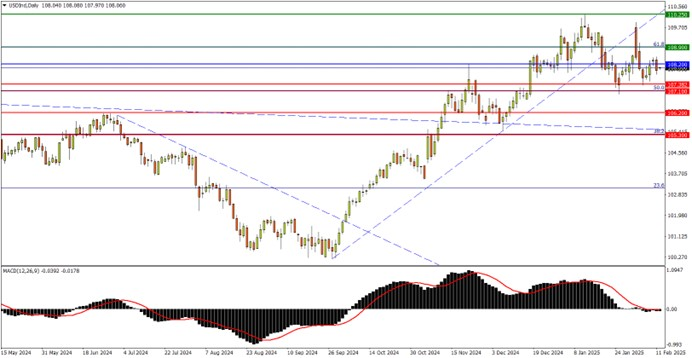Recently, the congressional testimony of Jerome Powell, chairman of the US Federal Reserve, and the latest consumer price index (CPI) data have become the focus of market attention. Investors are closely watching the impact of these factors on the US dollar index (DXY) to judge the future trend of the US dollar.
Powell's testimony: cautious policy signals
In a recent congressional hearing, Powell reiterated the Fed's policy stance, emphasizing that inflation is still above the target level, and said that the Fed will not easily cut interest rates until it sees reliable signals of continued decline in inflation. This statement reflects the Fed's concerns about inflation and implies that monetary policy will not be quickly relaxed in the short term.
Powell's speech released a relatively hawkish signal, which provided some support to the US dollar index. The market originally expected the Fed to start cutting interest rates in mid-2024, but if the rate cut is delayed, the US dollar may continue to remain strong.
Strong CPI: Expectations of interest rate cuts cool again
The latest CPI data shows that US inflation is still higher than market expectations, and core CPI (excluding food and energy prices) is still strong. High inflation means that the Federal Reserve must maintain higher interest rates for a longer period of time to ensure that inflation is truly under control.
The strong CPI data means that expectations of interest rate cuts will be further delayed, thereby pushing up US Treasury yields. This usually supports the US dollar index because higher yields make US dollar assets more attractive and attract international capital inflows.
Analysis of US dollar trend: short-term strength, but there is a risk of a correction
(1) Short-term: The US dollar index remains strong
Hawkish Fed policy: Powell's cautious attitude has reduced market bets on rapid interest rate cuts.
Inflation remains resilient: CPI data supports higher interest rates, helping the US dollar to remain strong.
Global safe-haven demand: If global economic growth slows or geopolitical risks rise, investors may continue to buy the US dollar as a safe-haven asset.
(2) Medium and long term: The US dollar may face correction pressure
Economic growth slowdown: If high interest rates put more pressure on the US economy, the market may re-price the Fed's policy path.
Other central bank policy adjustments: If the European Central Bank (ECB) or the Bank of Japan (BOJ) begins to tighten policy, the relative advantage of the US dollar may be weakened.
Fiscal deficit and debt issues: The high deficit of the US government may pose a certain drag on the US dollar in the future.
Conclusion: Be cautiously optimistic and pay attention to data changes
On the whole, the US dollar index may continue to remain strong in the short term, as the Fed's policy stance is relatively hawkish and inflationary pressure has not completely subsided. However, as US economic growth may slow down and market expectations for interest rate cuts gradually heat up, the US dollar index may face certain correction pressure in 2025.
In the future, investors need to pay close attention to the next round of inflation data, labor market conditions and changes in the global economy to determine whether the US dollar will continue to strengthen or enter a period of adjustment.
USDX Forecast Technical Analysis

The exchange rate previously broke through the support of the rally since October last year, and the subsequent rebound was again constrained by the reverse pressure of the lower track, and the exchange rate entered a high-level oscillation mode.
At the same time, MACD and other oscillating indicators also cooperated with the current price to come near the zero axis, suggesting that the market will make another direction choice; and the breakthrough action for the existing range will provide a guide for the rise and fall.
Resistance reference:
108.90 (strong) — 61.8% retracement of the decline in 2022-2023;
110.25 (weak) — the high of the year, standing above it will reshape the medium-term rally and fully open up more upside space.
111.40 (weak) — 78.6% retracement of the above decline, a breakthrough will look forward to the multi-year high set in 2022.
Support reference:
107.10 (strong) — 50% retracement of the decline, close to the 2023 high of 107.38;
106.00 (weak) — the rebound high in June last year;
105.30 (strong) — 38.2% retracement of the above decline, which is also the 4th wave retracement low. If it fails, it will expand the current adjustment wave space.
*Disclaimer: The content of this article is for learning purposes only and does not represent the official position of VSTAR, nor can it be used as investment advice.



